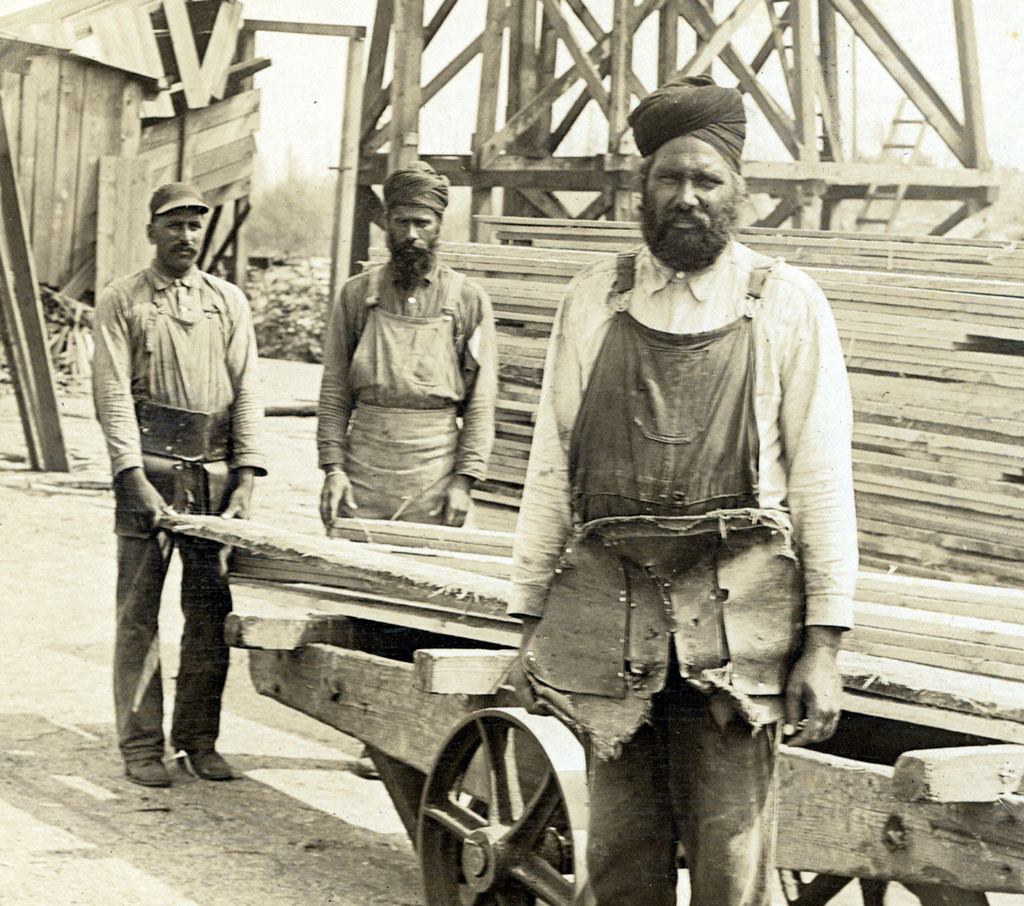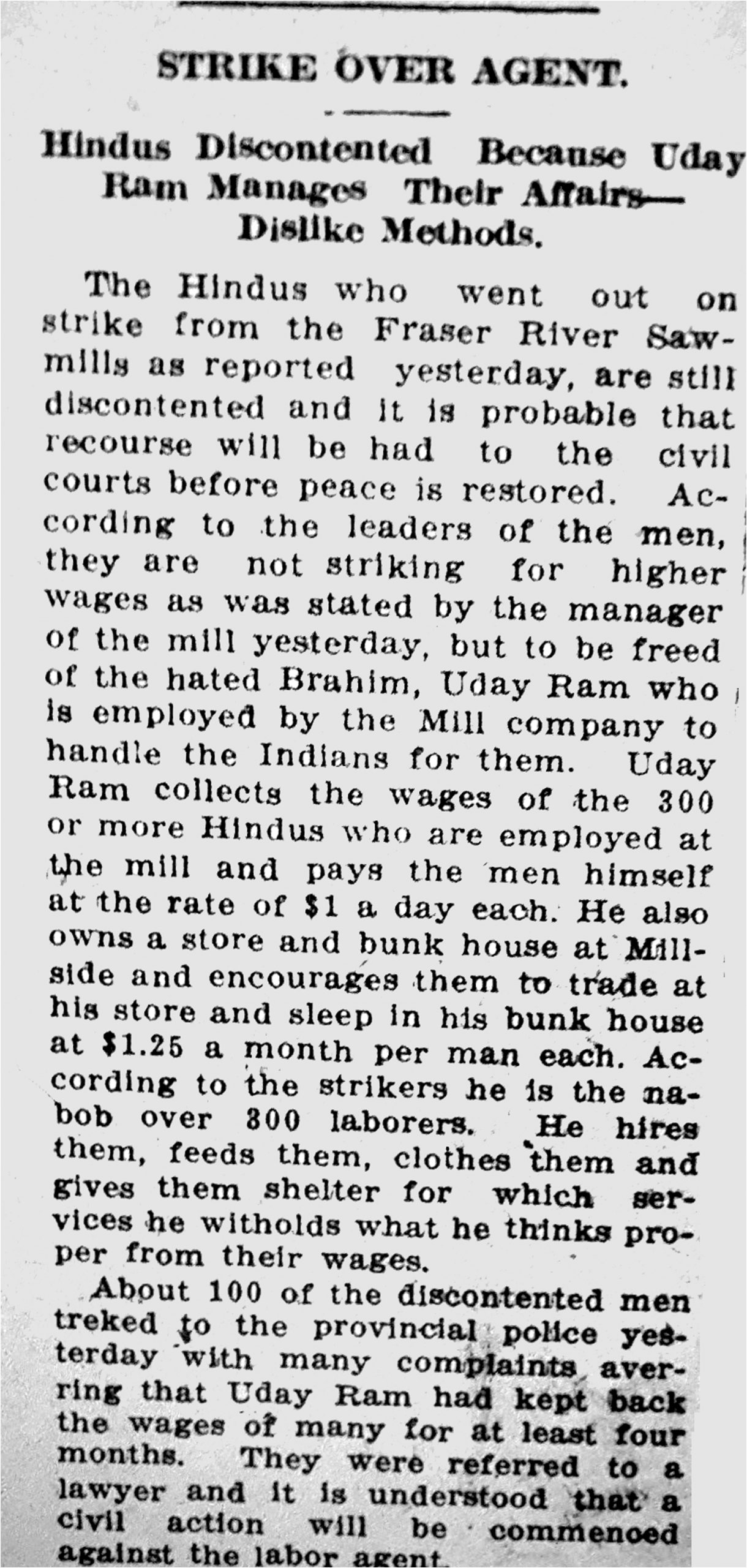
Earlier, we saw that in 1906 quarry workers at Tod Inlet went on strike to protest unhealthy working conditions.
On May 11 1907 The Western Clarion reported that “Hindu workmen” at a mill in Kaslo BC successfully struck for more wages.
In February 1909, 100 ‘Hindu’ lumber mill workers went on strike at Fraser Mills because their wages had not been paid to them by a labour contractor. In this incident, the workers took their case directly to the New Westminster Police, demanding they be freed from the contractor who was skimming their pay.
In an unusual twist, the labour contractor in question turned out to be Uday Ram who became President of the Canada India Supply Company run by Husain Rahim. [1]

Prior to 1912 many unions came and went in sawmills and logging operations up and down the west coast but they had little interest in the poorly paid immigrant workers who toiled mostly in the mills. Most of these unions were small, unsuccessful and short lived.
The International Union of Timberworkers, an affiliate of the American Federation of Labor was chartered in 1913 and managed to survive into 1923. In 1917 a small number of South Asians in BC applied to join.
“A union charter is being secured from the International Timber Workers, and the union will be in good shape in short time. It is understood three Hindu sawmill workers have applied to join.”
It wasn’t that South Asians were hesitant to join unions. Unions continued to be unwilling or unable to find ways to organize them. In 1921, New York University Economics lecturer and special agent of the US Bureau of Labor Statistics Rajani Das toured British Columbia and observed that South Asian workers were sympathetic to the labour movement’s goals.
“Those who work for American or Canadian employers… find difficulty in getting into trade unions owing to racial prejudice. Hindustanees have great sympathy for the labor movement and highly appreciate its aims and ideals. Moreover, they are willing to cooperate with labor organizations whenever possible.”[3]
- "Document Disappeared", The Daily Province, March 7, 1912, 40 and "Suit Between Hindus", The Daily Province, September 25, 1912, 20. ↵
- "Organization of Mill Workers is Completed", The British Columbia Federationist, August 24, 1917, 1. ↵
- Rajani Kanta Das, Hindustani Workers on the Pacific Coast, 34. ↵
